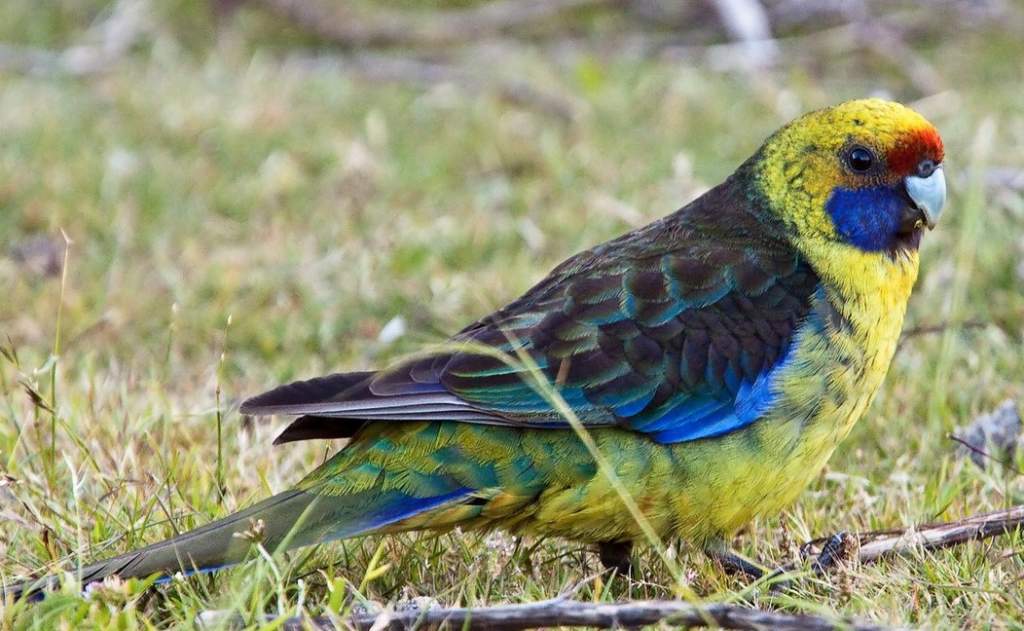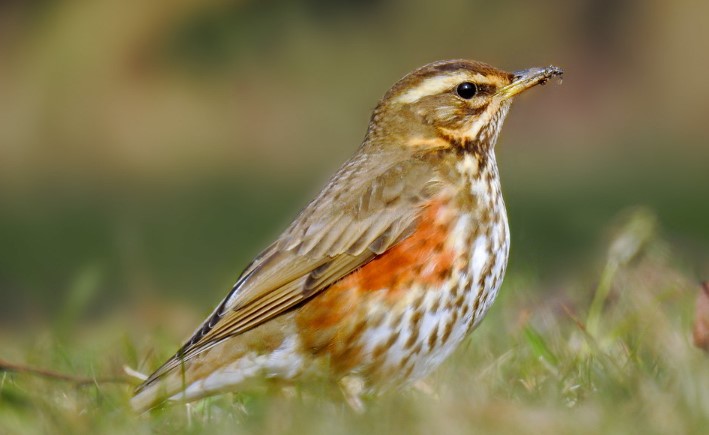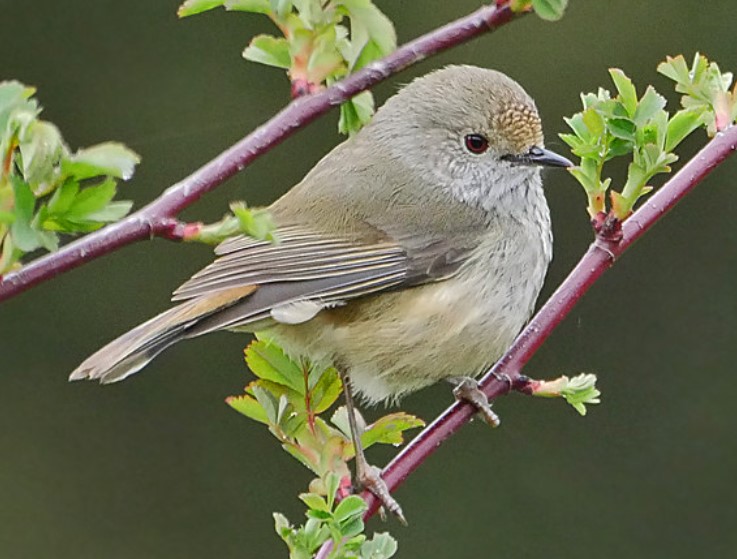Habitat: The tawny-breasted honeyeater (Xanthotis flaviventer) is one of the few honeyeaters of the Papua New Guinea tropical rainforests to reach Australia. It is limited to the rainforests and riverside galleries of vine scrub on the Cape York Peninsula, replacing Macleay’s honeyeater there. Like Macleay’s honeyeater, it forages unobtrusively in the middle and upper strata of the forest beneath the canopy, working through hanging clumps of dead vegetation and leafy vines and poking into crevices on trunks and branches. Progress is deliberate and methodical.
From perches well up, they call often throughout the day, even in the hot middle hours when other species are quiet. They frequently feed out to the edge of the rainforest and follow the canopy edge down to low shrubberies there, but rarely forage into adjacent eucalyptus or paperbark forests. Like most honeyeaters, the Tawny-breasted builds a hanging cup-shaped nest that is fastened at its rim into a horizontal fork in leafy foliage. The female usually builds the nest and incubates the eggs unaided, laying at daily intervals and beginning to sit with the laying of the second egg. Young hatch within 24 hours of one another, after 14–16 days of incubation. Chicks are fed by their parents. They fledge in the rather shorter time of 10–14, rarely 16 days.
Identification: Both sexes are similar. The upper parts are dark brown with an olive tinge, becoming darker on the crown; the nape is vaguely spotted pale gray. The wing and tail quills are dark brown-grey, edged outside with ochre and inside with brown-buff; the wing coverts are edged with ochre. The naked area of skin behind the eye is yellow-pink; the sash from bill to ear covers dusky, lined narrowly white above, tipped with a small yellow ear-tuft. The throat and sides of the neck are gray, becoming tawny brown on the breast and belly with pale streaks. The eyes are dark brown. The bill is black. The feet are leaden-grey. The immature bird is similar to adults; the wing coverts are more heavily edged brown ochre; the plumage is slightly darker above and paler and grayer below.
Diet: Tawny-breasted honeyeaters usually feed alone or in loosely associated pairs and sometimes small parties. Arboreal insects are their main prey, but they also take some fruit and nectar from clusters of flowers, for example, in mistletoes. For this, they have a conventional honeyeater’s tongue-long, protractible channeled structure split into four brush-tipped filaments at the apex. It is mainly when moving from point to point in the forest that the birds descend · to lower levels, flying in swift, dashing undulations among the tree trunks.
Vocalizations: The tawny-breasted honeyeater sound consists of a series of single, repeated whistles cycling up and down in pitch. Also chatters and scolds. However, the song is very loud.
Nesting and Breeding: Nesting and breeding occur in November and February. Nest a cup of bark strips and fiber, lined with finer fiber, slung from the rim in a horizontal fork in foliage, 4–20 meters above ground.
Eggs: The bird lays two eggs, which are smooth, pale flesh-colored, sprinkled sparsely with red-purple spots, particularly at the larger end; oval, about 27 x 17 mm. The incubation period is 14–16 days for females. Young fledge in 12–14 days.
Distribution: Tawny-breasted honeyeater is found in rainforests, galleries of vine scrub, and fringing mangroves—rarely at the edge of more open eucalypt forests—on the Cape York Peninsula, south to Malaman Creek on the west coast, and the Mellwraith Range and the Edward River on the east. also found in Indonesia, Papua New Guinea, and offshore islands.
Alternative Names: The bird is also known as Buff-breasted Honeyeater, Streaked Honeyeater, or Streak-naped Honeyeater.
Size: Tawny-breasted honeyeaters measure 190–220 mm in length.
Races: There are about seven races: one in Australia shared with southern New Guinea.
Read More: Striped Honeyeater (Plectorhyncha lanceolata)







